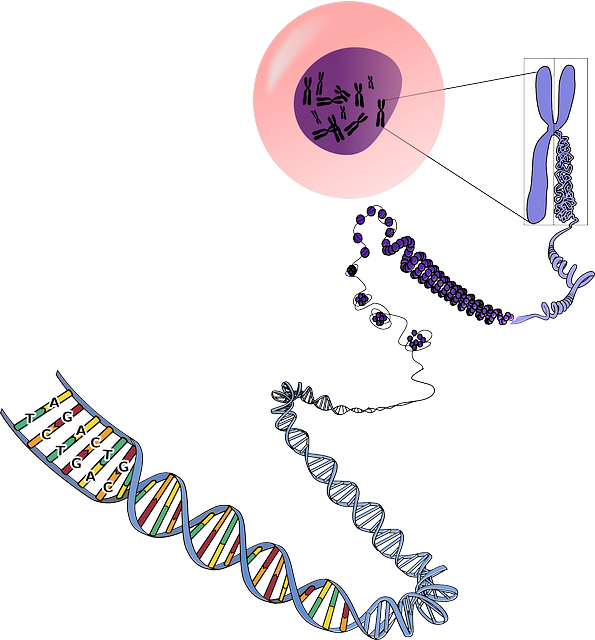Overview

Karyomapping is an advanced type of preimplantation genetic diagnosis (PGD) process used in the IVF process. PGD is usually recommended for couples who carry a defective gene, which leads to an inherited genetic disorder. The familiarity of a defective gene carrier may obtain either from already having a genetically disordered child or from family history or through DNA testing.
Karyomapping is the technique applied to avoid passing on the defective gene from the couples who are known carriers of the defective gene. In this process, embryos are pre-screened to identify the genetic structure before implantation into the womb.
Patients with genetic disorders need to continue with the IVF process followed by PGD. In general, PGD applied in the In-vitro-fertilization (IVF) involves retrieval of multiple eggs from ovaries of the intended mother and artificially fertilize them in the embryology laboratory to produce multiple embryos. And every produced embryo screened for defective gene carrier through PGD. Only, healthy embryos, which are expected to be free from the genetic condition have selected and transferred to the uterus. Thus, the PGD helps to break down the chain of hereditary transmission of genetic defective.
The procedure involves in Karyomapping
A blood sample is taken from the intended parents (both father & mother) and also from close relatives (one or more) who have a blood relationship with the intended parents. The blood sample of relatives is considered as ‘references’.
The chromosomal structure of the intended parents and references are tested through Karyomapping for genetic analysis. Almost three lakhs possible different characteristic features of the defective chromosome may present in father, mother or reference blood sample can be analyzed through Karyomapping.
Karyomapping is considered as the special type of the PGD as it can identify the unique fingerprint present in the chromosome, which is responsible for carrying the defective gene.
Therefore, embryos produced in the IVF process are tested to check the presence of the identical fingerprint present in their father, mother or reference blood sample. The presence of the same fingerprint in the embryos denoted that they carry the defective gene and have a high risk of developing inheriting a genetic disorder. But the absence of such fingerprint in certain embryos denoted the absence of the defective gene and maximum scope of free of the disorder. These selected embryos are considered good candidates for transferring them into the mother's womb.
The difference of Karyomapping with other PGD
Before the invention of Karyomapping, PGD is the only identification test available for detecting the inheritance of a defective gene. The duration of PGD requires a long duration along with several scientists involves for the conduction of the test. Therefore, couples with a genetic disorder have experienced a long waiting period before pursuing IVF treatment. But Karyomapping is a universal test for PGD to detect any type of genetic defect. The duration of the conduction of Karyomapping takes only a few weeks and reduce the waiting period of IVF treatment.
Accuracy of karyomapping
A single cell or a small number of cells taken from the embryo before uterine transmission. This accuracy of the test cannot be 100%, as the collected sample is very small. But experts suggested that the possibility of successful detection of any type of genetic disorder through karyomapping is more than 95%.
Considering the minimum chance of an incorrect result, the expert recommends prenatal testing for confirmation of unaffected pregnancy. Amniocentesis or chorionic villus sampling are types of prenatal testing, which is conducted by taking many thousands of cells from the fetus. Therefore, the chances of the accuracy of the test result are higher.
Above all karyomapping is not absolute assurance of correct embryo testing for a genetic disorder, but it is considered as a quick and efficient test to reduce the risk of a genetic disorder, which affects the pregnancy.
The requirements for karyomapping
The sample of DNA is collected from the couples (both the woman and the man) who have a genetic disorder and will pursue the IVF treatment by using a cheek swab. A similar process is also repeated to collect additional samples from 'references' who have a direct blood relationship with the intended parents and carry a similar defective gene.
If the patients act as a carrier of the defective gene then the 'references' should be obtained from both the maternal and the paternal side who shares the mutant gene of both the mother and father respectively. But in case of couples have their biological child, then the 'references' sample can be collected from an affected child. In the case of no sample obtained from an affected child, the 'references' sample collected from the couple’s parents.
If only one side of the family carries a defective gene or dominant disorder, the reference sample needs to collect from only that affected side of the family means either from the affected child of the couple, or parent affected by the disorder. In certain cases, the sample is also collected an unaffected relative to compare the DNA fingerprint associated with the mutated gene, with that of the normal gene in the family.



